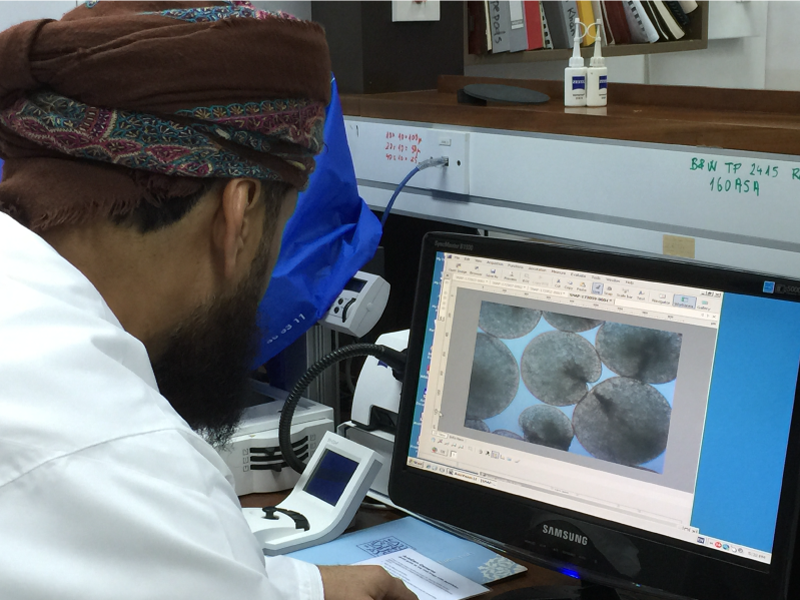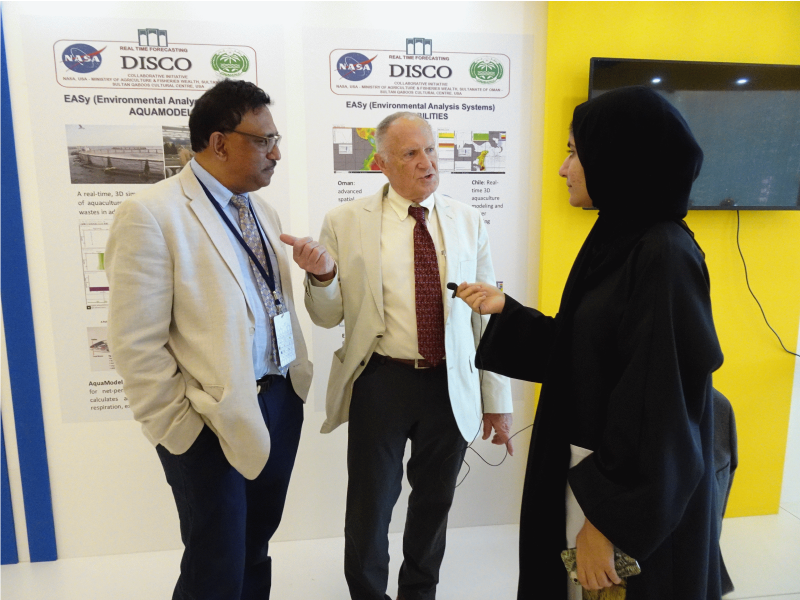Early Adopter

Applied Research Topic
Potential Applications ► HAB, hypoxia, and fish kill forecasting decision support tool (DST) for the coastal waters of Oman
Description
Over the past decade and half, the Sultanate of Oman has been experiencing massive outbreaks of Harmful Algal Blooms (HABs) attributable to the warming trend and the onshore influx of hypoxic waters caused by the expansion of the Arabian Sea's permanent Oxygen Minimum Zone. Field and satellite data from the last few years indicate that HABs are becoming more widespread and intense in the northern Arabian Sea. What is particularly disconcerting is that these outbreaks are beginning to pose a significant threat to coastal resources, water quality, public health, tourism, and the operational capabilities of many coastal industries that serve the energy, freshwater, and socio-economic needs of Oman, and of countries bordering the Arabian Sea. To address the overwhelming needs of Oman, with the support of NASA, the Ministry of Agriculture and Fisheries Wealth (MAFW), and Sultan Qaboos University, we built the Decision and Information System for the Coastal waters of Oman (DISCO). While primarily developed for forecasting hypoxia and HAB events, in particular the green mixotrophic dinoflagellate Noctiluca scintillans, DISCO provides an expansive ocean-atmosphere forecasting system with extensible capability. The linkages between sea-state, hypoxia, HABs and jellyfish illustrate DISCO's potential beyond what it was originally intended for: from a forecasting system of sea state, hypoxia and HABs, to one that potentially allows analysis and forecasting of many environmental processes such as the forecasting of fish-kills and the subsequent analysis of the causes. However, we note that jellyfish swarms and fish kill events are not unique to the coastal waters of Oman, but are an Arabian Sea basin-wide phenomenon, afflicting several countries like Yemen, Iran, Pakistan, and India, among others. Hyperspectral PACE data will be used to aid the development of green Noctiluca ocean color algorithms for the coastal waters of Oman.Significance
DISCO has already been used to provide on-demand support for a diverse set of problems afflicting Oman (e.g., oil spill fate, HAB analysis and prediction, tropical storm forecasting) as well as to other countries. We have demonstrated the extended applied and scientific potential of DISCO and already used it in analyses of industrial effluent discharge and seawater intake, environmental assessment, biodiversity, aquaculture, optimum water properties for fisheries, contaminant tracking, just to name a few of the many DISCO applications. DISCO can be used to serve the needs of a diverse range of infrastructure development activities in support of Oman's transition to a Blue Economy. Leveraging hyperspectral PACE OCI data will allow DISCO to predict hypoxia and species level HABs (Noctiluca), which enables the possibility of not only forecasting fish kill events, but the follow-up analysis of their cause.Why PACE
The availability of hyperspectral PACE OCI data will help accelerate the process of developing green Noctiluca specific ocean color algorithms for coastal waters of Oman. We are currently developing pigment-based algorithms that may benefit immensely from PACE. In addition, we believe that the Arabian Sea will serve as an ideal test and natural laboratory for developing and testing hyperspectral ocean color algorithms as green Noctiluca blooms, which are almost mono species and usually follow blooms of diatoms and are preceded by blood red blooms of Mesodinium /Myronecta rubrum that thrive in acutely hypoxic waters. We are also interested in ingesting PACE aerosol data along with the PACE hyperspectral ocean color data into DISCO as we have seen signs of a strong connection between aerosol plumes and green Noctiluca bloom outbreaks. Further, we are interested in exploring the use of this system for studying jellyfish outbreaks where we hope that PACE data may be useful signals related to these animals.End User(s)
Ministry of Agriculture and Fisheries Wealth, OmanMinistry of Environment and Climate Affairs, Oman
Desalination plants, Aquaculture, Oil Refineries, Shipbuilding and Tourism
Countries around the Arabian Sea (India, Pakistan, Iran)
SAT Partner(s)
Heidi DierssenPublications
Goes, J.I., H. Tian, H. do. R. Gomes, O. R. Anderson, K. Al-Hashimi, S. deRada, H. Luo, L. Al-Kharusi, A. Al-Azri, D.G. Martinson (2020). Ecosystem State Change in the Arabian Sea fueled by loss of snow over the Himalayan-Tibetan Plateau region, Scientific Reports. 10:7422 DOI: https://doi.org/10.1038/s41598-020-64360-2.
Goes, J.I., H. do. R. Gomes, K. Al-Hashimi and A. Buranapratheprat (2018). Ecological drivers of Green Noctiluca blooms in two monsoonal driven ecosystems In: “Global Ecology and Oceanography of Harmful Algal Blooms”. Glibert, P., Berdalet, E. Burford, M. Pitcher G. and Zhou, M (Editors). DOI: 10.1007/978-3-319-70069-4_17.
Goes, J.I. and H. do. R. Gomes (2016). An ecosystem in transition: the emergence of mixotrophy in the Arabian Sea. In "Dual Perspectives in Oceanography". Glibert P and Kana, T (Editors), Springer International Publishing. DOI: 10.1007/978-3-319-30259-1.
Gomes, H. do R., J.I. Goes, S.G. Prabhu Matondkar, E.J. Buskey, S.G. Parab, S. Basu and P. Thoppill (2014). Massive outbreaks of Noctiluca blooms in the Arabian Sea linked to the spread of hypoxia, Nature Communications. 5:4862 DOI: 10.1038/ncomms5862.
Goes, J.I., P. Thoppill, H. do R. Gomes, and J.T. Fasullo (2005). Warming of the Eurasian landmass is making the Arabian Sea more productive, Science 308, 545–547, DOI: 10.1126/science.1106610.




